Gas industry of Turkmenistan: from past to present
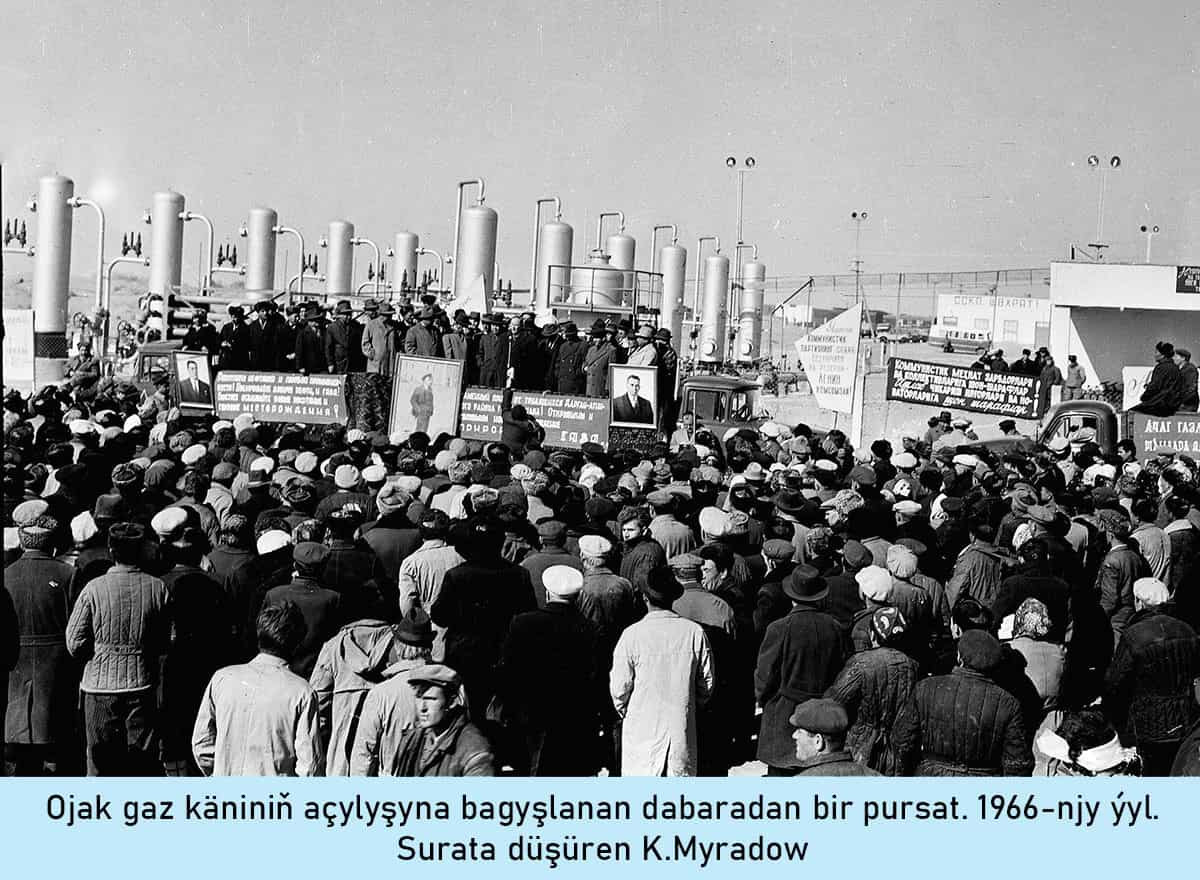
The gas industry, being one of the largest sectors of the country’s national economy, plays an important role in ensuring the prosperous life of the Turkmen people and achieving the prosperity of our Motherland. Under the leadership of President Serdar Berdimuhamedov, who worthily continues the initiatives of the Hero-Arkadag, large investments are being made in the further development of this sector, the discovery and development of new hydrocarbon deposits and the introduction of environmentally friendly innovative technologies into the industry.
Huge resources of natural gas and many years of experience in the oil and gas industry allow us to successfully achieve our goals. We decided to present to our readers a series of articles devoted to the development of the gas industry in our country, representing more than half a century. We use information from outstanding scientists and specialists who left an indelible mark on the development of this industry, in particular, data from Gurbanguly Yaziyev.
On January 1, 1966, the Türkmengazsenagat Production Association was established in Turkmenistan (Ashgabat city) and the Aral expedition of the Soyuzburgaz Trust was transferred under its authority. Then, on the basis of this trust, the Türkmengazagtaryş Trust was established.
If we go back a little earlier and look back at the work carried out in the past, it becomes clear why there was a need to create such a large production base.
In Turkmenistan, the prospecting for geological structures containing gas deposits began in the pre-war period. At the first stage of research work, small-scale geological photography work was carried out mainly in Eastern Turkmenistan, and within 12 years (1929–1940), 23 geological structures were discovered there. During the Great Patriotic War (1941–1945), only two structures were discovered in the eastern region of the country.
Of course, gas exploration expanded significantly in the post-war years. Research activity noticeably intensified in all regions of Turkmenistan, and the total number of open structures and areas with oil and gas prospects has exceeded 1,000.
Until the mid-1950s, work on the extraction of associated gas was carried out in the south-west of Turkmenistan in the Caspian Sea region, where, as a result, significant oil resources were discovered, and work was organized on their development and the processing of raw materials. However, the volumes of produced associated gas remained insignificant.
The first gushing flow of natural gas in Turkmenistan was obtained at the Gyzylgum gas condensate field in 1952, and it was put into operation in 1962. Due to the fact that the volumes of natural gas, produced at the Gyzylgum gas condensate field, were small, there was no need to create an independent gas production enterprise. The extracted “blue fuel” was used for the needs of the population and production facilities of the city of Nebitdag (now Balkanabat).
Until 1966, Turkmenistan remained the main oil producer in entire Central Asia. Small volumes of associated hydrocarbon gases were also extracted from oil fields developed in Western Turkmenistan. Several deposits of natural gas with small resources were discovered. However, the limited demand for gas from local consumers, the production capacity available at that time and the lack of a gas pipeline for transportation to industrialized cities located in the center of the then Soviet Union served as a certain obstacle to the development of the gas industry.
Despite the discovery of large gas condensate deposits in the oil fields of Western Turkmenistan in 1959–1965, the history of the gas industry of Turkmenistan is inextricably linked with the beginning of the development of natural gas fields located in the central and south-western parts of the country.
Work on deep drilling in the oil and gas region in Central Turkmenistan began in 1957 by the Türkmenburnebit Trust.
In addition, there, starting from 1959, prospecting and research drilling work was carried out by the Geology Directorate of the Council of Ministers of the Turkmen SSR. In the period from 1962 till 1965 in the north and north-east of the country, more precisely at the sites Goyungyrylan, Sarygamysh, Gurganjik, Nurumgyr, Choksakyr, Zhdanovskaya, Tarimgaya, Oktyabrskaya, Shorkol, Amandag and Ojak, exploration and drilling work was carried out by the Aral expedition of the Soýuzburgaz Trust.
In 1959, the first industrial flow of natural gas was obtained in the Central Karakum Desert, then, in 1962, the Bayramaly gas field was discovered in the eastern region, which contributed to an increase in the scale of exploration work throughout the platform part of Turkmenistan.
The number of promising gas-bearing structures and fields served as the basis for creating and developing the gas industry and meeting the needs of the national economy. Thus, the Türkmengazsenagat Production Association was established to organize and conduct all activities carried out there.
The Ojak gas condensate field is one of the largest fields discovered in Central Asia. It is located in the northern part of the Karakum Desert and is the first field with huge natural gas resources discovered in the north-eastern part of Turkmenistan.
Construction, prospecting and exploration work at the Ojak field began in 1964, and in February 1966, the first industrial gas flow was obtained from the 1st well. In the same year, eight months later, the field was put into pilot production. On November 23, 1966, the transportation of the first cubic meters of natural gas began via the Bukhara–Ural gas pipeline, which ran 13 km north of the field. In November 1967, this gas pipeline was connected to the first stage of the Central Asia–Center (CAC-I) gas pipeline system.
As a result of drilling operations carried out at the multi-layer Ojak field, sediments of the Permian-Triassic, Jurassic, Cretaceous, Paleogene and Neogene-Quaternary periods were discovered. The total depth there is 3,700 meters. Sixteen deposits, belonging to the Jurassic and Cretaceous periods and characterized by productivity, consist of layers that are sandstones with small interlayers of clay. Gas deposits in the form of separate accumulations are located in geological structures called traps.
The gas from the field contains methane (90-95%), from 0.4 to 4.5% of nitrogen and from 0.2 to 0.4% of carbon dioxide. There is no hydrogen sulfide. The useful thicknesses of productive strata vary from 10 to 38 meters. All open deposits throughout the field have been developed. Their depth ranges from 1,490 to 2,180 meters.
As it has been noted, the Bukhara–Ural and Central Asia–Center gas pipelines lie near the Ojak field. Moreover, the location of productive formations at shallow depths, the volume of gas resources, the standard method of drilling wells, the presence of a small volume of heavy hydrocarbons and carbon dioxide and the absence of hydrogen sulfide in the gas composition served as an impetus for the speedy use of hydrocarbon raw materials for the development of the national economy.
This caused the need for the accelerated development of the field, which in turn contributed to the construction of production facilities and the creation of improved working and living conditions for those involved in this production process. At one time, through the joint efforts of specialists from the Türkmengazsenagat Production Association and scientists from the Central Asian Research Institute, a project was developed with the aim of accelerating the development of the Ojak gas condensate field and increasing the technical and economic efficiency of the development through the use of the method of simultaneous and separate exploitation (SSE) for the implementation of separate development of two or more layers of one well. This project was first applied at the Ojak field.
In the process of developing gas fields, good results are achieved when wells are put into operation simultaneously with geological exploration work. The use of this method makes it possible to calculate the volume of deposits based on data obtained during prospecting and drilling operations at wells. The commissioning of the Ojak field using this accelerated method contributed to the reduction of the number of exploration and production wells by 18 units, that is, a reduction in the drilling of production wells by 36 thousand meters.
This field was put into operation five years earlier than the period prescribed by the rules. As a result, the volumes of gas extracted from Ojak alone for use in the national economy amounted to about a billion cubic meters. This method was also applied during the launch of the multi-layer gas condensate fields Nayip, Northern Nayip, Kukurtli and Eastern Nayyip. As a result, thousands of meters of production wells were saved, tens of billions of cubic meters of gas were additionally produced and sent ahead of schedule to the needs of the national economy.
The use on an industrial scale of the method of simultaneous and separate exploitation (SSE) from several productive horizons makes it possible to reduce the cost of hydrocarbon production by reducing the cost of the operation and maintenance of production wells, decreasing capital investments in the construction of reservoirs, oil gatherings, reducing costs during their operation and repair and reducing capital investments for drilling production wells. The SSE method was applied to 61 wells of 78 production wells of the Ojak gas condensate field and to 112 wells of 212 multilayer gas condensate fields of North-Eastern Turkmenistan (Ojak, Nayyip, Northern Nayyip and Kukurtli).
Thus, 51.2 billion cubic meters of natural gas were extracted from additionally commissioned formations (cited data of 1980), which amounted to 25.3% of the volume of all gas produced.
In addition, gas production, using the SSE method, along with highly productive formations, makes it possible to put into operation low-productive formations and obtain the necessary geological and production results during the development of gas fields. The Türkmengazsenagat Production Association at one time successfully coped with all of the above tasks.
Oraznazar HESHDEKOV,
Ussatnews.com.
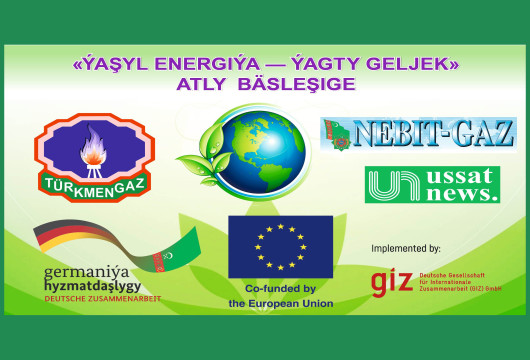
Turkmenistan’s Green Energy Diplomacy
Throughout its centuries-old history, humankind has strived to be closer to nature and to treat its resources and clean environment with great care.
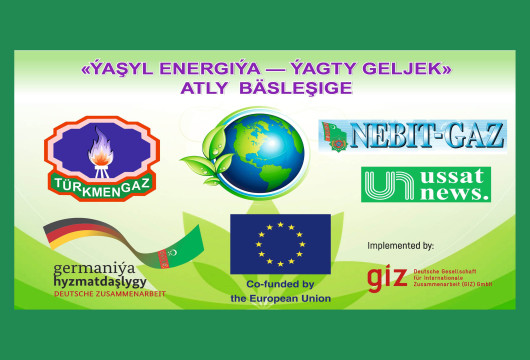
Green energy – prosperity of the future
One of the main differences between the use of green energy, i.e., the use of solar, wind and water energy, and the use of fossil fuels (oil, gas, coal and others) as energy is that their use practically does not cause pollution caused by the emission of methane and carbon dioxide into the atmosphere.
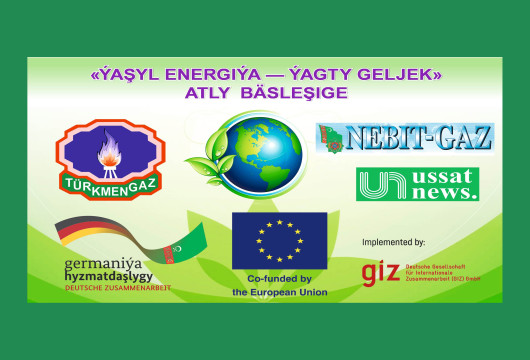
Environmental well-being is the main requirement of the era
In the period of the Revival of the New Era of the Powerful State, the work carried out to protect the environment, to ensure environmentally friendly conditions, to reduce harmful emissions, to preserve the ozone layer and to rationally use natural resources is gaining momentum. Environmental safety is of great importance in ensuring a prosperous and peaceful life in the country.
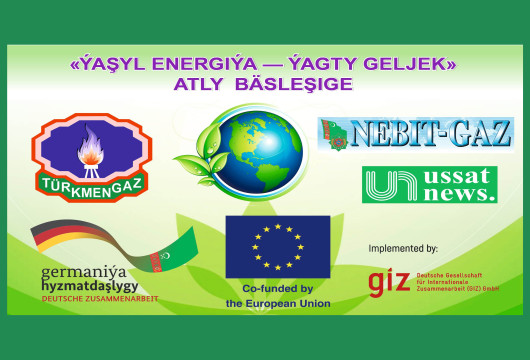
Environmental well-being and green energy are a priority
As a result of the increase in population and production rates, the economy continues to develop.
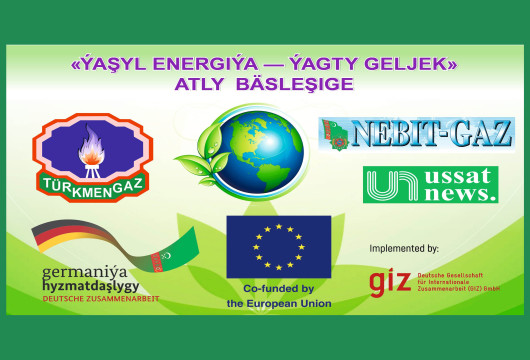
Source of energy for a bright future
In the era of rapid development of modern science and technology, humanity faces important environmental problems. Such problems as global warming, air pollution and shortage of natural resources force the world community to look for new energy sources. In this situation, green energy, that is, renewable energy obtained from natural sources, comes to the fore.






